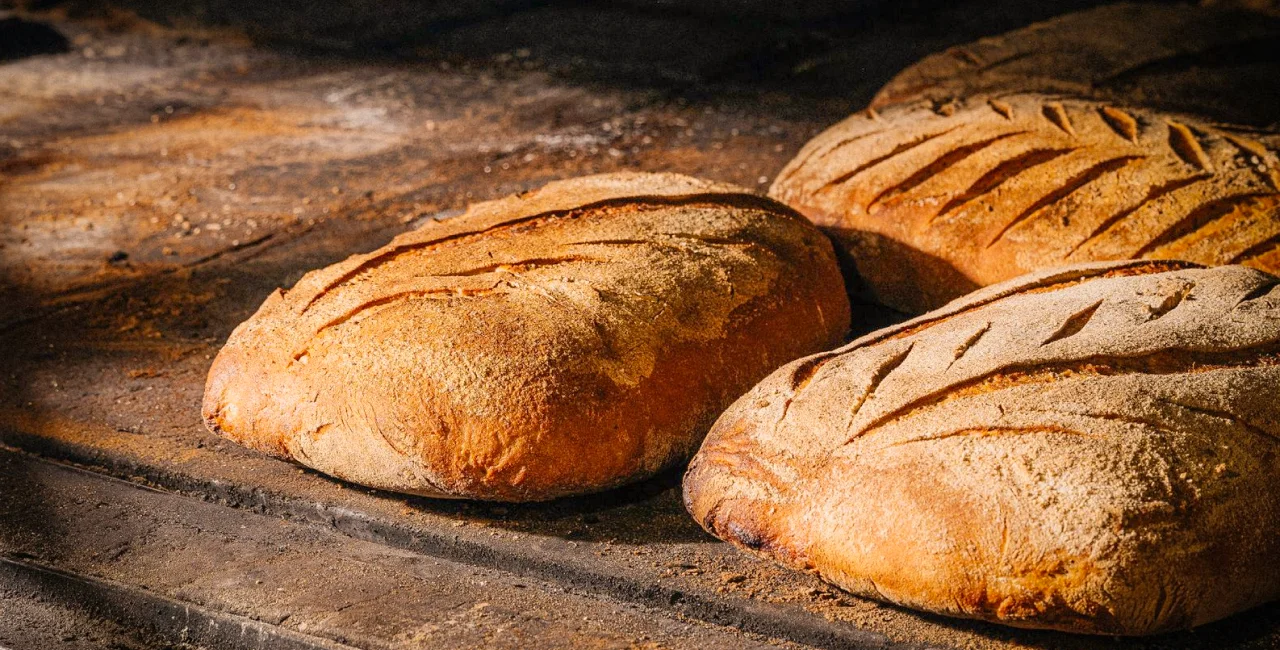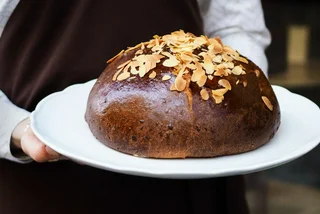In the Czech Republic, where bread consumption is about 40 kilograms of bread per capita, thick slices of spongy rye-wheat-flour bread are spread with lard (škvarky) or farmer’s cheese (tvaroh) or sliced, pan-fried, and rubbed with garlic to make topinky.
Baking bread at home with a starter (kvas/kvásek) has been a Czech culinary tradition for generations. Once you've created a starter you'll be able to bake delicious sourdough bread for years to come. Making your very own sourdough starter is easier than you might think. All you need is some flour, water, and a bit of patience. Within a week, your starter will begin to bubble and come alive right in its jar.
To guide us through the process, we spoke with seasoned bakers Juliane Fischer and Jarda Kozdělka of Eska bakery in Prague. They shared their simple tips for cultivating a thriving fail-proof starter in your Czech kitchen.

Day 1
- A 1-liter container (ideally glass)
- 10 g flour (of your chosen variety)
- 10 g lukewarm water
- Mix the flour and water together, cover with a lid or plastic wrap, and let it ferment for 1 day in a warm place (between 26–30°C). Within 12-24 hours the first bubbles should appear.
Day 2
- Measure out 20 g starter from day 1, 20 g flour (the same variety used the previous day), and 14-20 g water at around 77°F
- Mix the starter from the previous day with the flour and water, stir well, cover, and let rise in a warm place overnight.
- NOTE: When adding flour and water to the starter, try to maintain a 1:1 ratio; it will depend on the type of flour and consistency you want based on the given recipe. At Eske bakery, the starter is fed with a 1:1 ratio.
Day 3
- Measure out 20 g starter from the previous feeding, 20 g flour (same used throughout starter development), and 14-20 g water around 77°F.
- Add to the starter as you did the previous day.
Next steps
The starter will signal that it's ready for feeding twice per day. You'll know because it will rise and then stop or begin to fall. This happens as the bacteria use up all the food and stop producing carbon dioxide, causing the starter's volume to increase.
Continue feeding with the same routine for days 4 through 10. Gradually decrease the time it takes for the flour to be fully incorporated.
Pay close attention to changes in the starter. Monitor its color, which should stay consistent, as well as the texture, flavor, and smell. The flavor will develop more sourness over time and the aroma of fermented flour will intensify.
Troubleshooting your starter
Take care not to over-feed. If on the first day you add just a teaspoon of flour without regularly removing some of the original starter, the microbes risk running out of food and dying off.
Know when to feed. You may find that it only rises once per day at first, or possibly bubbles enthusiastically on the second day and wants feeding twice daily. The right moment is when the volume doubles and activity stills. For second feedings, use a small amount of starter mixed with fresh flour at a steady ratio.
For fewer feedings adjust the ratio. Don’t want to feed the starter so frequently? Adjust the ratio of starter to flour and water. Start with 1 part starter to 2 parts flour and water, up to a maximum of 6 parts. This extended feeding interval is easier to manage.
Patience yields rewards! A 4-day-old starter can bake bread if fed properly. But waiting 7-10 days for balance ensures the ideal acidity develops. In some bakeries, starters mature for 3 weeks before use.
Starter shortcut
The bakers at Eska also have a more convenient method: they share not only their active starter but also a dried version with customers. Reviving the dried starter is simple. Just mix 50 g of the "powder" with 50 ml of lukewarm water. Within 8 to 12 hours, the bacteria and yeast slowly reawaken as they become rehydrated and hungry.
For the first feeding, use 50 g flour and 50 g water. The feedings will then fall into a predictable routine. Each day, remove a set amount of starter and replenish it with an equal ratio of flour and water. So if 100 g is removed, add 50 g each of flour and water in its place. With regular maintenance, the revived starter will thrive once more.
In the Czech Kitchen is a weekly column written in cooperation with the culinary experts from Ambiente. Established in 1995, the Prague-based collective of pubs, restaurants, and fine-dining outlets has transformed the Czech culinary landscape and lent to the widespread awareness of quality food service and production in Czechia. Follow their socials or book your table at www.ambi.cz.












 Reading time: 3 minutes
Reading time: 3 minutes 




















